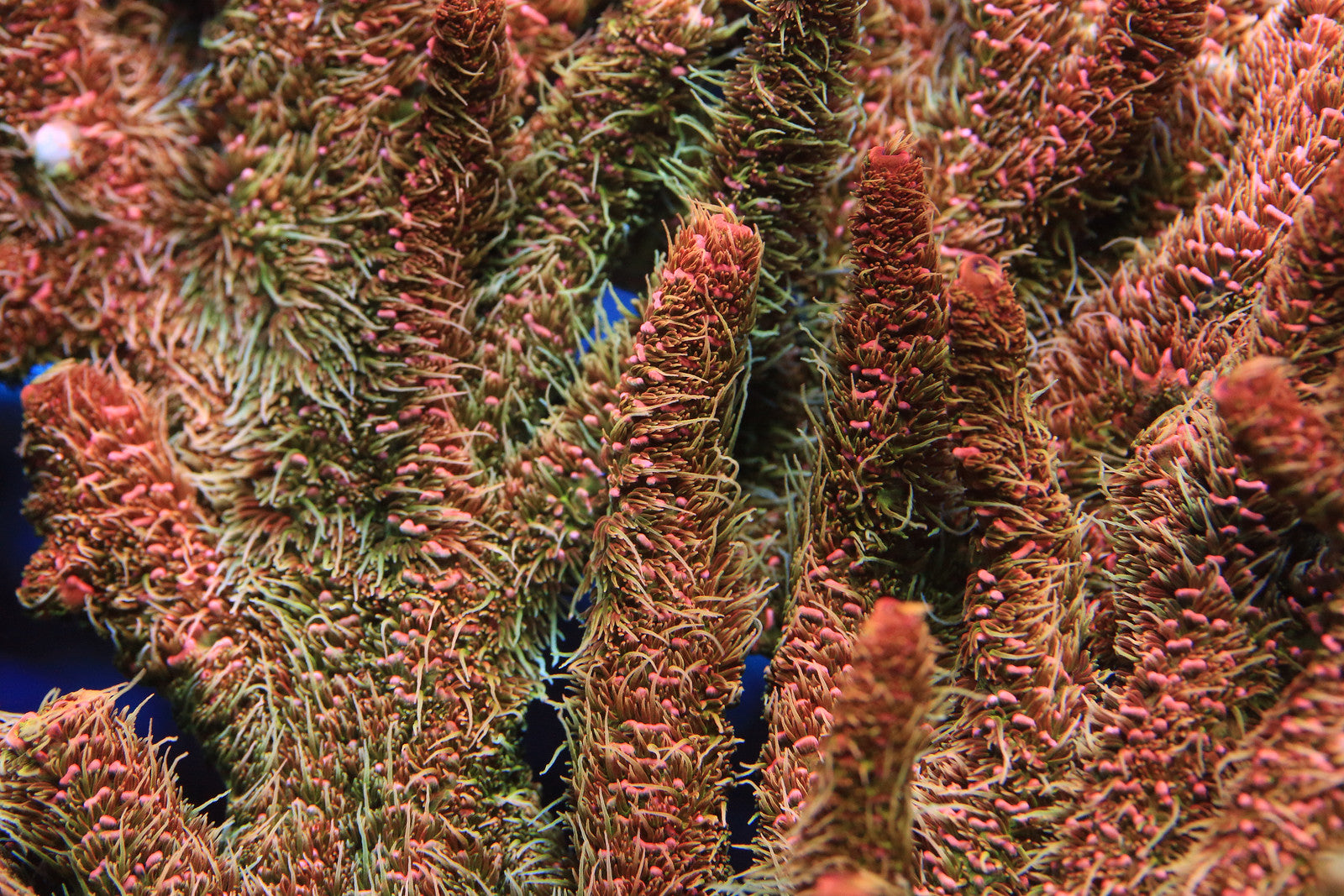Caring for your saltwater aquarium means understanding some essential steps involved in creating natural, healthy filtration for your marine life. The best and most commonly used healthy filtration source is live rock.
There are many things to know about live rock before you purchase some for your saltwater tank. This guide includes information about different types of live rock, the purpose and benefits of live rock, and the curing process. It also includes a little review of some of the marine life that may hitch a ride into your aquarium.
The information below is everything you need to know in order to effectively use live rock and help your saltwater aquarium thrive.
What Is Live Rock?
Live rock is not actually living, but it does have living residents. Essentially, live rock is dead coral, which almost always means calcium carbonate. Because it used to be living coral, it has many components necessary to create a natural ecosystem in your tank including microorganisms from the ocean. When you first place live rock in your saltwater tank, you may see some of these critters scamper out of the rock. Make sure you get rid of any crustaceans that could prey on your fish. Once cured, you have a natural filtration device that beats all alternatives.
Purposes, Benefits and Uses
The primary purpose of live rock is biological filtration. The bacteria and critters living in and around the rock can provide surface area for beneficial bacteria to perform the nitrogen cycle. This natural (sometimes manmade) material can be almost everything that your tank needs as far as filtration. It is possible that you will need auxiliary filtration or more live rock to make sure your tank stays healthy.
Other purposes, benefits and uses of live rock include the benefit of biodiversity. Each organism in your tank will contribute to the health of its environment, and live rock introduces multiple organisms. Live rock also offers hiding places for fish and an attachment point for living coral. It can be the basis for the shape of your coral reef or a standalone decorative feature. Coralline algae will grow on it and provide a changing crust of color in your tank.
Different Types of Live Rock
Live rock is grown in the ocean, but it is not taken from living reefs. Finding ethically harvested live rock is essential to the conservation of our natural reefs.
The ways to grow live rock are:
- Farmed/aquacultured: coral purposefully grown in the ocean for the purpose of live rock creation
- Manmade: artificial live rock that is used in saltwater aquariums, providing marine life the opportunity to grow on the rock.
What Are Live Rock Hitchhikers?
Live rock hitchhikers are the little critters and organisms that hitch a ride on your live rock on its journey to your tank. The usual suspects that you may discover in your tank could include:
- Coralline algae
- Other algae
- Spaghetti worms
- Shrimp
- Crabs
- Bristle worms
- Snails
- Sponges
Some of these organisms, such as Coralline algae, are very desirable to have in your tank. Be careful to watch out for harmful hitchhikers such as algae, mantis shrimps, gorilla crab, asterina starfish and aiptasia. All of which can be a disaster if allowed to take over. Do your research, and monitor the tank to see if you have any predators or unwanted creatures in your live rock.
How to Cure Live Rock for Saltwater Aquariums
Curing is an important step before adding new reef aquarium inhabitants into your aquarium. The live rock contains living organisms that must go through the curing process. Some of the organisms will not survive the initial cycling process. This will release ammonia into the water column. A toxic chemical that will harm aquarium inhabitants.
To cure your live rock, there are some basic steps:
- You must let it soak in saltwater.
- Keep the tank heated to 78 degrees Fahrenheit.
- Completely change the water 2 or 3 times a week and perform an ammonia test. It can take a few weeks or even a couple months for the live rock to cure. Testing is key.
- When the ammonia and nitrites are at 0 ppm, your live rock is safe for aquarium use.
How Top Shelf Aquatics Can Help
If you want more information about how to set up your live rock to ensure the success of your marine animal and coral reef tank, contact Top Shelf Aquatics today. We offer our expertise and quality, exclusive and valuable marine livestock for your saltwater aquarium needs.
By choosing Top Shelf Aquatics, not only can you get some of the healthiest selections of rare and valuable corals, but we'll provide you with instructions about how to care for your reef tank, so you can enjoy your little piece of the ocean for years to come.
Join our VIP club and receive text notices of sales, promotions and events!

